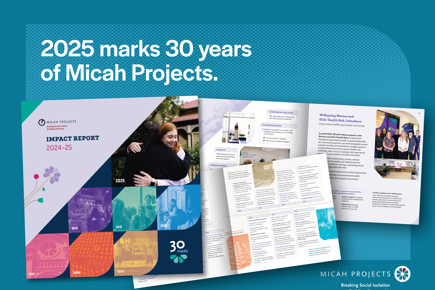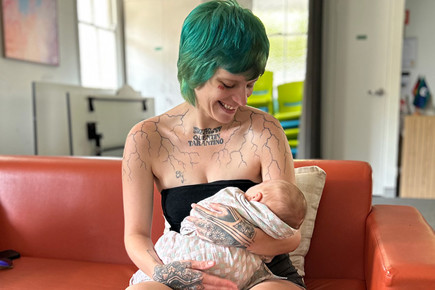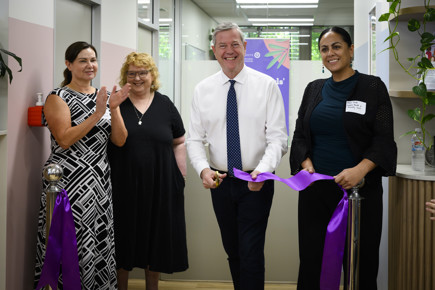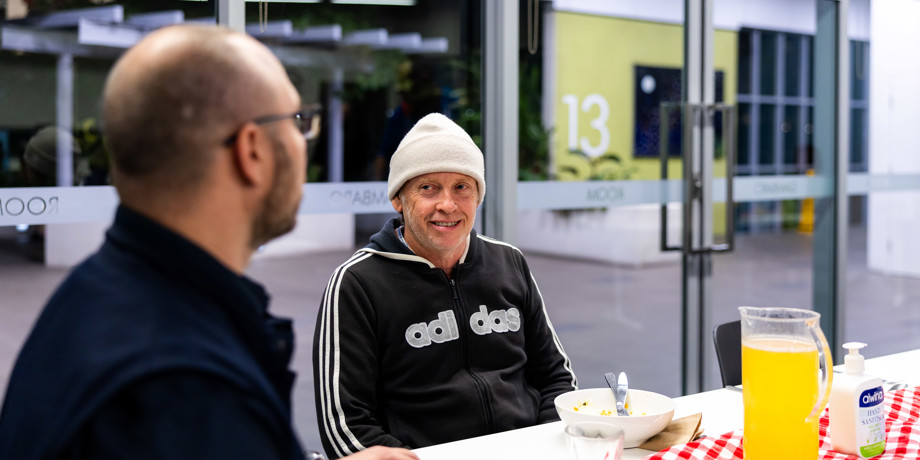The University of Queensland report, using homelessness data from Micah Projects, highlights the complex challenges people face when trying to hold onto their housing and the kind of support that makes a real difference.
This research is a reminder that homelessness is not just a housing issue - it’s a human issue. By investing in supportive housing and person-centred care, we can help people stay connected to their communities, avoid rough sleeping or emergency accommodation, and build lives of dignity and stability.
A model that works
Our CEO Karyn Walsh explained that sustaining tenancies faces a twofold challenge: the personal issues individuals face, and the systemic barriers that make housing difficult to access and maintain.
“The personal issues that a person at risk of homelessness experiences include addiction, mental illness and neighbourhood conflict as well as domestic and family violence. Systemic issues around housing, health, child safety and community services provide barriers to people accessing housing," Karyn says.
A supportive housing model identifies the risks and puts supports in place so families and individuals can continue their housing and not become homeless. Changes to housing systems are also needed to remove the barriers to continuing housing.
“On the one hand society sees it as a problem with the person experiencing poverty, and on the other hand there are problems with the housing system that also need addressing,” Karyn says.
These challenges are deeply interconnected. Personal struggles often stem from or are exacerbated by systemic gaps, making it difficult for individuals and families to maintain stable housing without support.
“A supportive housing model identifies the risks and puts supports in place so families and individuals can continue their housing and not become homeless,” says Karyn.
“Supporting participants must be proactive and building a strong rapport. It also needs evidence informed tools, a continuum of support and tailored solutions. By addressing multiple and interacting problems, engaging with systems and coordinating services, the risks to tenancies can be addressed,” says Professor Cameron Parsell from the University of Queensland and Life Course Centre.
“Ultimately this prevents homelessness through people keeping their tenancy and not becoming homeless in the first place. It means the trauma of sleeping rough on streets, in parks, tents or cars and cycling through motels and emergency accommodation can be avoided,” says Cameron.
Sometimes the immediate need is healthcare or simply having the ability to put a meal on the table when all other money has gone into paying rent and other bills.
Read the full report: What Does it Take and Mean to Sustain a Tenancy and Prevent Homelessness
Keep reading
-

2025 AGM and Annual Dinner News
On Monday 10 November, we held our AGM and annual dinner. We were honoured to be joined by our board, members, partners, supporters, collaborators and our staff and to present our 2024-25 Impact Report.
Domestic and Family Violence ServicesSocial Enterprise and Community ConnectionHousing and Homelessness ServicesInclusive Health PartnershipsLotus ServicesSupportive HousingSystems Leadership and AdvocacyWellspring ServicesWomen, Children and Families -

Meet Jade and Arlo News
Jade and Arlo are living in a motel. This is a story not of deficit, but one of incredible strength and resilience. Of a new mum, a young woman, wanting to provide the best, a future, an education, a home, opportunities for her bub, 12 week old Arlo.
Housing and Homelessness ServicesWellspring ServicesWomen, Children and Families -

A milestone for community health and inclusion News
The Wellspring Women and Girls' Health Hub offers accessible, culturally safe, gender and trauma-informed care, ensuring women and girls can receive support without barriers or judgment.
Domestic and Family Violence ServicesWellspring ServicesWomen, Children and FamiliesHousing and Homelessness ServicesSupportive Housing -

2025 Christmas Hamper Appeal Event
Our annual Christmas Hamper Appeal is back! In 2024, over 1,200 hampers were delivered to families in need across Brisbane. This year, we’re calling on our community to donate goods, run drives, or volunteer to help pack and deliver hampers. Let’s spread joy together this Christmas!
Social Enterprise and Community ConnectionHousing and Homelessness ServicesWomen, Children and FamiliesDomestic and Family Violence ServicesInclusive Health PartnershipsLotus ServicesSupportive HousingWellspring Services
